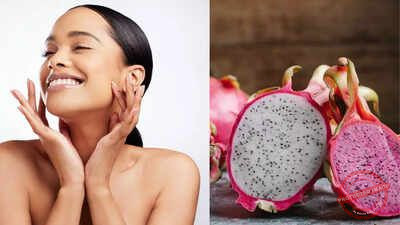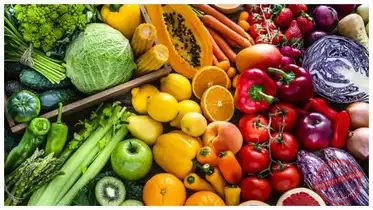ARTICLES
What is the Best Meal for Diabetics? 7 Foods to Consider for Diabetic Patients
What is the Best Meal for Diabetics? 7 Foods to Consider as a Diabetic Patient

Living with diabetes requires special attention to diet, particularly focusing on foods that help maintain stable blood sugar levels. For Nigerians dealing with diabetes, incorporating culturally relevant, nutritious, and balanced meals is essential. Fortunately, many traditional Nigerian foods can be adapted into diabetes-friendly dishes. This article explores some of the best meals for Nigerian diabetic patients, emphasizing the importance of balanced nutrition, portion control, and understanding the glycemic index (GI) of foods.
Glycemic Index (GI)
The glycemic index measures how quickly carbohydrates in food are broken down into glucose and absorbed into the bloodstream. Foods with a high GI raise blood sugar levels faster than foods with a low GI. Diabetic patients are encouraged to opt for low-to-moderate GI foods, which release sugar slowly into the bloodstream, helping to manage blood glucose levels.
Considerations for Diabetic Diets
Portion Control: Managing portion sizes is crucial. Overeating, even healthy foods, can cause blood sugar spikes.
Fiber: High-fiber foods help slow down sugar absorption, making them an excellent choice for diabetics.
Protein: Including lean protein helps control hunger and blood sugar levels.
Healthy Fats: Good sources of fats, like avocado and olive oil, help improve insulin sensitivity.
7 Best Nigerian Foods for Diabetic Patients
1. Unripe Plantain.

Unripe plantain is a staple in many Nigerian households and is a great option for diabetics because it has a low GI and is rich in fiber. Unripe plantain can be boiled, grilled, or made into porridge. It also contains complex carbohydrates that provide sustained energy without causing sharp blood sugar spikes.
How to Prepare:
- Boil unripe plantains and serve with vegetable sauce.
- Prepare unripe plantain porridge with a small amount of palm oil, fish, and plenty of vegetables like spinach or ugu.
2. Beans and Brown Beans-Based Dishes.

Beans, especially brown beans, are an excellent source of fiber, protein, and slow-digesting carbohydrates. Dishes like moin-moin, akara, and plain boiled beans are suitable for diabetics. Beans have a low GI and help keep blood sugar levels stable.
How to Prepare:
- Cook plain boiled beans with spices and serve with a side of grilled fish or chicken.
- Prepare moin-moin (steamed bean pudding) with a small amount of oil, and pair it with vegetables for a balanced meal.
ALSO READ: How to End a Relationship with a Married Man or a Sugar Daddy: 11 Ways
3. Vegetable Soups.
Nigerian soups made from leafy vegetables such as ugwu (pumpkin leaves), ewedu (jute leaves), or spinach are nutrient-dense and low in carbohydrates. These soups are rich in vitamins, minerals, and fiber, all essential for managing diabetes.
How to Prepare:
- Prepare soups like edikaikong, afang, or bitterleaf soup with minimal palm oil, lean protein (such as fish or chicken), and avoid heavy starch thickeners. Pair the soup with a small serving of low-carb swallow like oatmeal fufu or almond flour swallow.
4. Oats and Oatmeal.

Oats are a good source of soluble fiber, which helps manage blood sugar levels. They can be used to make oatmeal, which can be a healthy alternative to high-carb foods like yam or garri. Oats can also be ground into flour and used to make swallows for soups.
How to Prepare:
- Make oatmeal porridge with a little salt, and pair it with boiled eggs or fish for added protein.
- Use oat flour to make a low-carb swallow that can be eaten with vegetable soup.
ALSO READ: 0 Memory Boosting Foods for Effective Studying and Success in Exams
5. Fish and Seafood.

Fish, particularly fatty fish like mackerel, sardines, and salmon, is rich in omega-3 fatty acids, which help reduce inflammation and improve insulin sensitivity. Grilled or boiled fish is a great addition to any Nigerian meal for diabetics.
How to Prepare:
- Grill or steam fish and serve with steamed vegetables or a vegetable-based soup.
- Use fish as a protein source in soups and stews instead of red meat.
6. Millet and Guinea Corn.
Millet and guinea corn are traditional grains in Nigeria that have a low GI and are packed with fiber, vitamins, and minerals. These grains are a healthier alternative to white rice and can be used to make pap or swallow.
How to Prepare:
- Use millet flour to make a low-GI swallow for soups.
- Prepare a light millet porridge and serve with vegetable sauce or fish.
7. Garden Eggs (Eggplant)
Garden eggs are rich in fiber and low in carbohydrates, making them a perfect choice for diabetics. They are also packed with antioxidants that help reduce inflammation.
How to Prepare:
- Grill or steam garden eggs and serve with a tomato-based sauce.
- Make a garden egg stew and pair it with a low-carb side like steamed vegetables or oat swallow.
ALSO READ: 10 Nutritious health benefits of Adding Corn to your Diet
8. Nuts and Seeds.
Nuts and seeds, like groundnuts (peanuts), almonds, and chia seeds, provide healthy fats, fiber, and protein. These can be incorporated into snacks or meals to promote satiety and help stabilize blood sugar.
How to Incorporate:
- Add groundnuts or chia seeds to salads or smoothies.
- Eat a handful of nuts as a snack between meals to maintain energy levels.
Foods to Limit
- White Rice and Processed Carbs: These have a high GI and cause rapid spikes in blood sugar.
- Sugary Drinks and Foods: Sodas, sweetened fruit juices, and pastries should be avoided.
- Starchy Swallows: Eba, pounded yam, and fufu should be eaten in moderation or substituted with lower-carb alternatives like oat or almond flour swallows.
Managing diabetes in Nigeria doesn’t mean giving up traditional foods. With careful planning, many Nigerian meals can be adapted to suit a diabetic-friendly diet. Prioritize low-GI foods, lean proteins, healthy fats, and fiber-rich vegetables. By embracing these nutritious options, Nigerian diabetic patients can enjoy delicious meals while keeping their blood sugar levels in check.
ALSO READ: How to Deal with Sapa in School as a Nigerian Student: 17 Foods to Try When Sapa Hits You
Discover more from 9jaPolyTv
Subscribe to get the latest posts sent to your email.

 NEWS21 hours ago
NEWS21 hours agoNigeria Introduces Tough Regulations to Curb Rogue Digital Lending Practices

 ARTICLES22 hours ago
ARTICLES22 hours ago30 Loan Apps in Nigeria Wey Never Cast That Actually Disburse Money Without Stress (Even Without a Credit Score)

 EDUCATION20 hours ago
EDUCATION20 hours agoNYSC pays arrears after two-month break

 EDUCATION20 hours ago
EDUCATION20 hours agoNELFUND relocates headquarters to Abuja permanent site

 RELATIONSHIP23 hours ago
RELATIONSHIP23 hours agoShould You Date Someone with Debt? The Truth No One Talks About

 ARTICLES15 hours ago
ARTICLES15 hours agoWill Loan Apps Debit BVN-Linked Accounts in 2026? The Facts Everyone Must Know

 EDUCATION20 hours ago
EDUCATION20 hours agoASUU, others won’t go on strike, minister assures Nigerians





![Dangerous Loan Apps With Hidden Charges in Nigeria [Quickash, PO Cash, Urgent Money, Hi Credit, Top Chance, Best Cash, Ivy Credit]](https://9japolytv.com/wp-content/uploads/2025/09/dangerous-400x240.jpeg)
![Dangerous Loan Apps With Hidden Charges in Nigeria [Quickash, PO Cash, Urgent Money, Hi Credit, Top Chance, Best Cash, Ivy Credit]](https://9japolytv.com/wp-content/uploads/2025/09/dangerous-80x80.jpeg)























